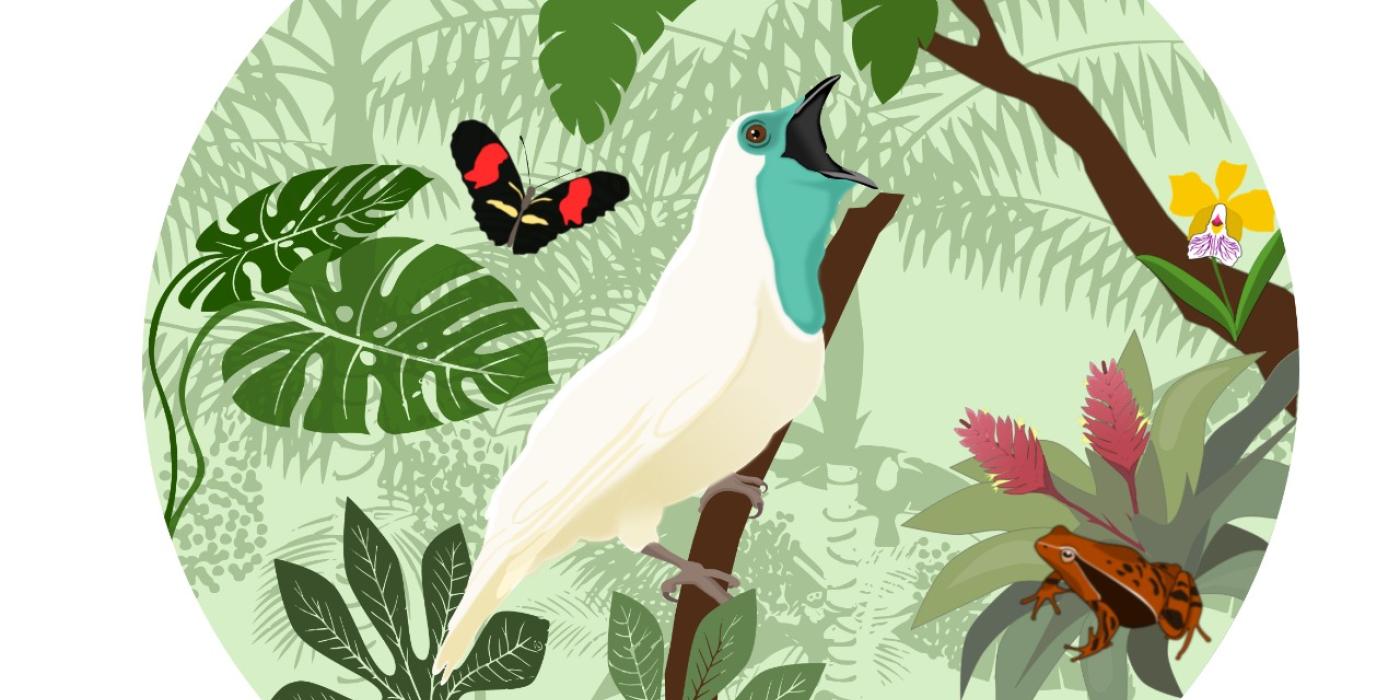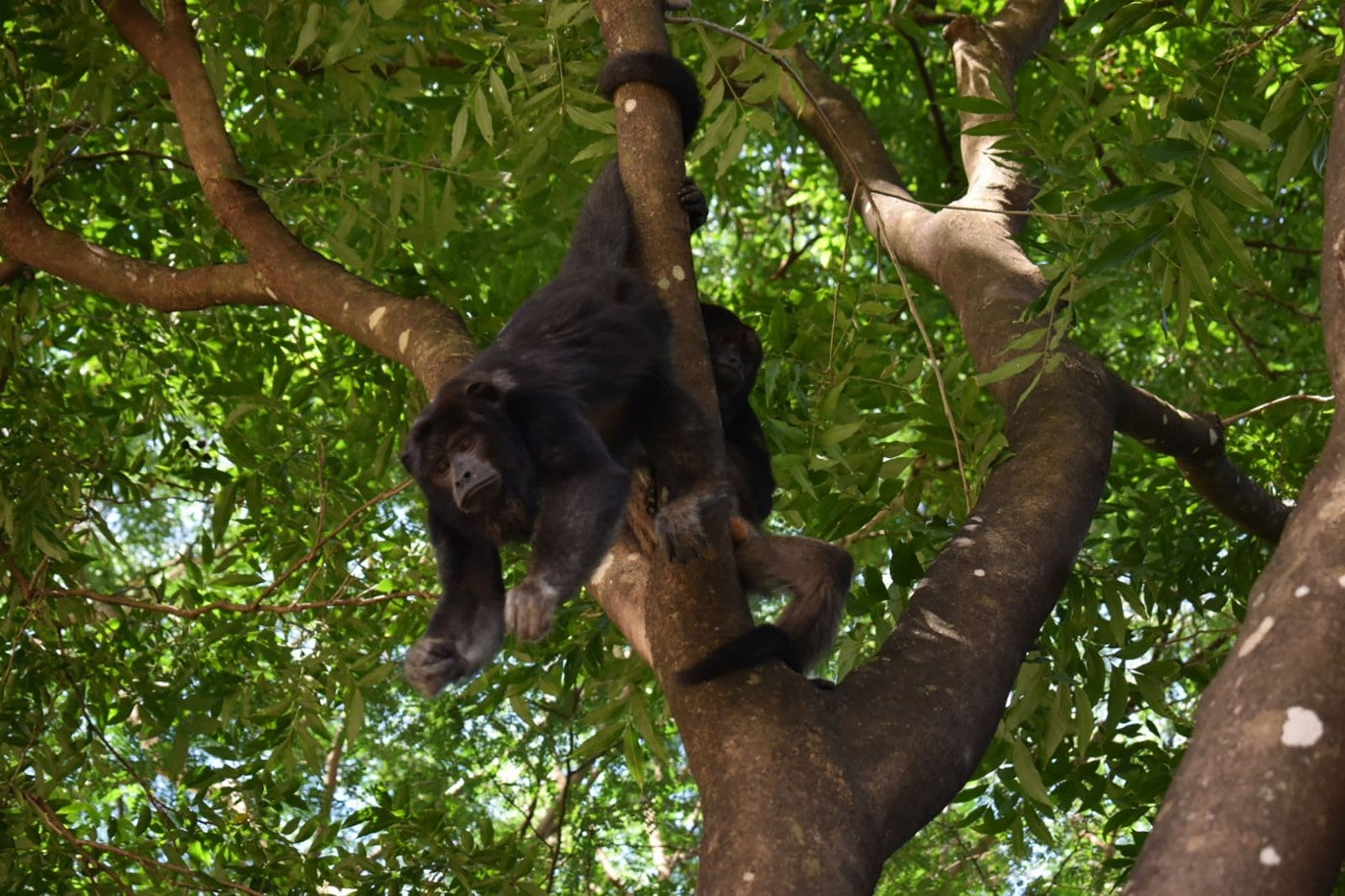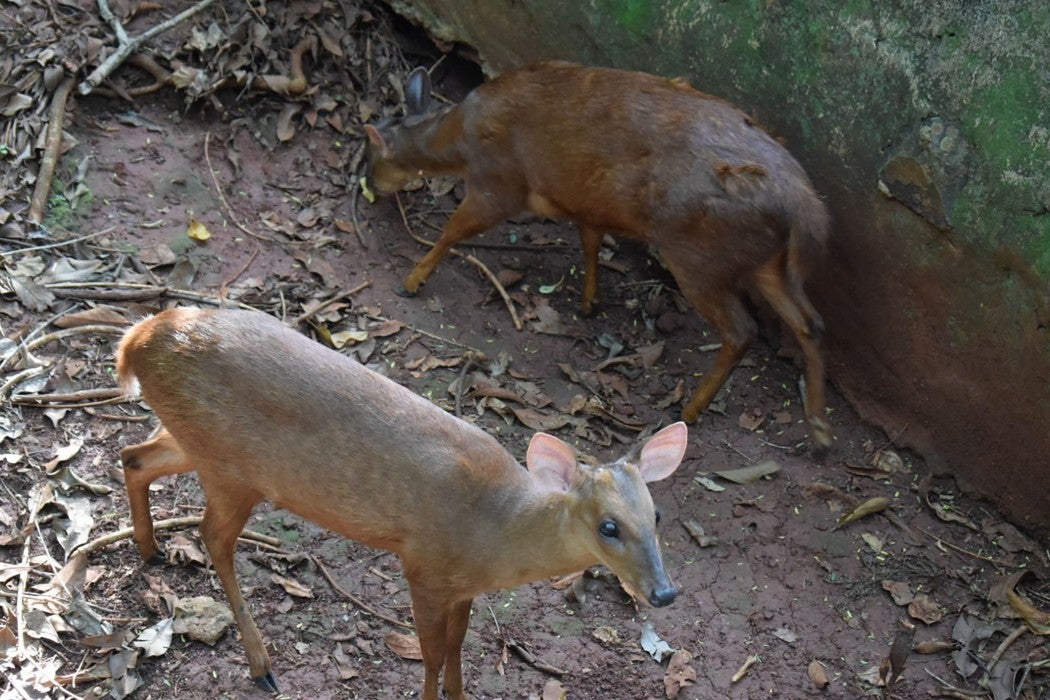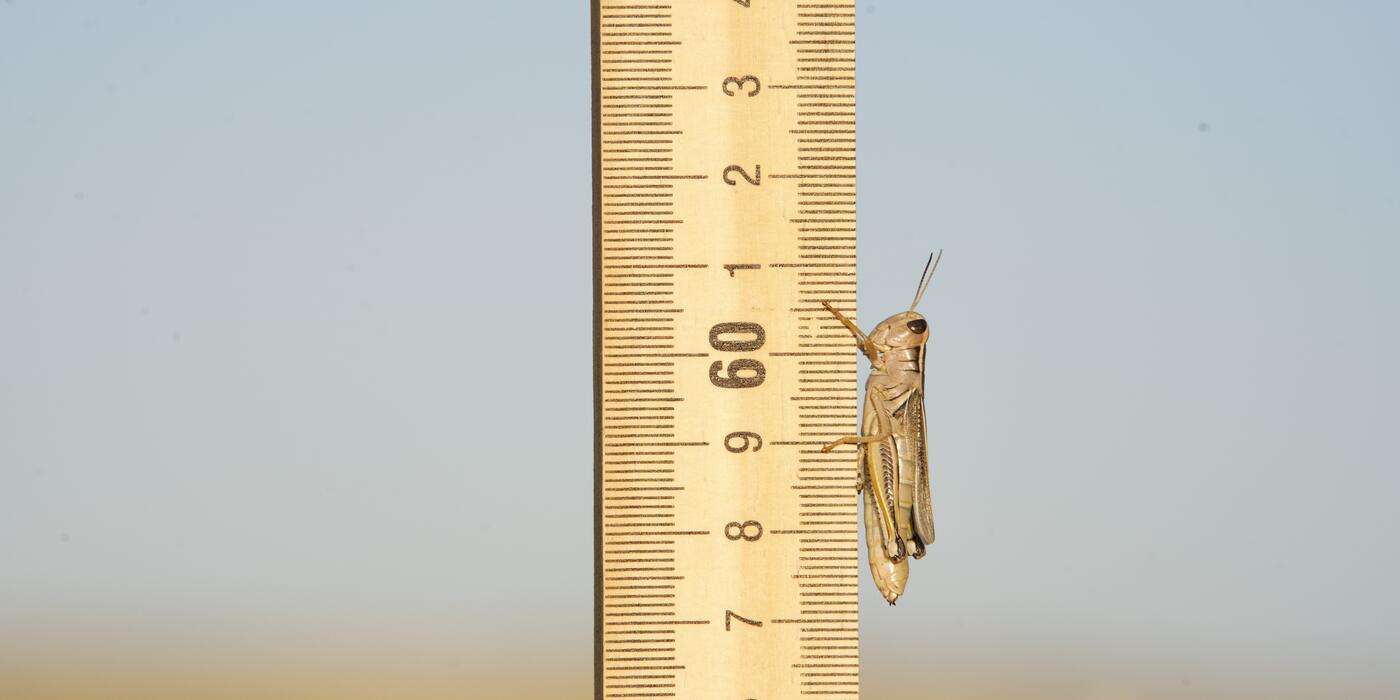Mapping Ecological Corridors in Paraguay Without Setting Foot on the Ground
One hot and humid afternoon at the end of 2019, I experienced one of those moments in life that takes your breath away. I was near the Iguaçu National Park, a protected area in southern Brazil. While I was admiring the astonishing scenery made up of huge trees, colorful bromeliads (plants that grow on shady forest floors or attached to trees), fungi of all forms, and many other amazing species, I heard a metallic, strident, and intense sound, similar to the collision between a hammer and an anvil echoing through the forest.
I looked around frenetically, searching for it with my eyes and ears – although I knew exactly who the owner of that song was, a bare-throated bellbird! With a distinctive, loud voice that has an underlying sense of electric beat, his song echoed the ringing of bells in the distance at regular intervals. As an ecologist with a focus on biodiversity conservation in the Atlantic Forest, that moment had a very special meaning. Despite visiting the Atlantic Forest several times, I had never seen the area’s iconic bird in nature. That day, I was able to see it in flight.
The bare-throated bellbird (Procnias nudicollis) is a bird only found in the Atlantic Forest. Males, about the size of a robin, are the singers and have entirely white plumage. The sides of their head and throat are bare (the reason for its name) and are jade green with black bristles. Females are slightly smaller, but their plumage, largely gray and yellowish-green, is so different from the males that it’s easily mistaken for another species.
But what makes this species so important is what they eat and how. The bellbird is what we refer to as a large-gape frugivore, meaning the bird eats fruits from a wide variety of plants and disperses large seeds through its poop or vomit. It may sound unsightly, but without bellbirds and other important seed-dispersing species, the growth of new plants is not possible, and new trees won’t grow.
There are fewer and fewer bellbirds, mainly due to deforestation and heavy trapping pressure for the illegal pet trade. Because of this, the species is listed as near threatened according to the International Union for Conservation of Nature Red List. The bare-throated bellbird would cross my path again months later as a key species in one of the most interesting conservation studies I have participated in.
The bare-throated bellbird is one of many wonders that inhabit the Atlantic Forest, one of the most exuberant places on Earth. The Atlantic Forest crosses the borders between Brazil, Argentina, and Paraguay, and once covered roughly 10% of South America. Thousands of species can be found in these majestic forests, a true symphony of colors, shapes and sounds. In terms of biodiversity, the Atlantic Forest is second only to the Amazon rainforest in the Americas. But unlike the Amazon, which despite accelerated deforestation still maintains most of its forest, the Atlantic Forest has already lost more than 80% of its native vegetation cover.
Today, commercial agriculture, cattle ranching and industrial forestry drive habitat loss and fragmentation of the Atlantic Forest. It’s a catastrophic combination for biodiversity. Pastures, plantations, and concrete leave little space for native species. Only small “islands” of forest remain in most Atlantic Forest landscapes. Without a way to cross the “ocean” of human-modified environments, individual animals are trapped in small populations. With few individuals, there isn’t enough genetic diversity for healthy populations, and a natural disaster could wipe out an entire population. Bare-throated bellbirds and other jewels of the Atlantic Forest, such as jaguars, tapirs and white-lipped peccaries, are all at risk primarily due to population decline and isolation.
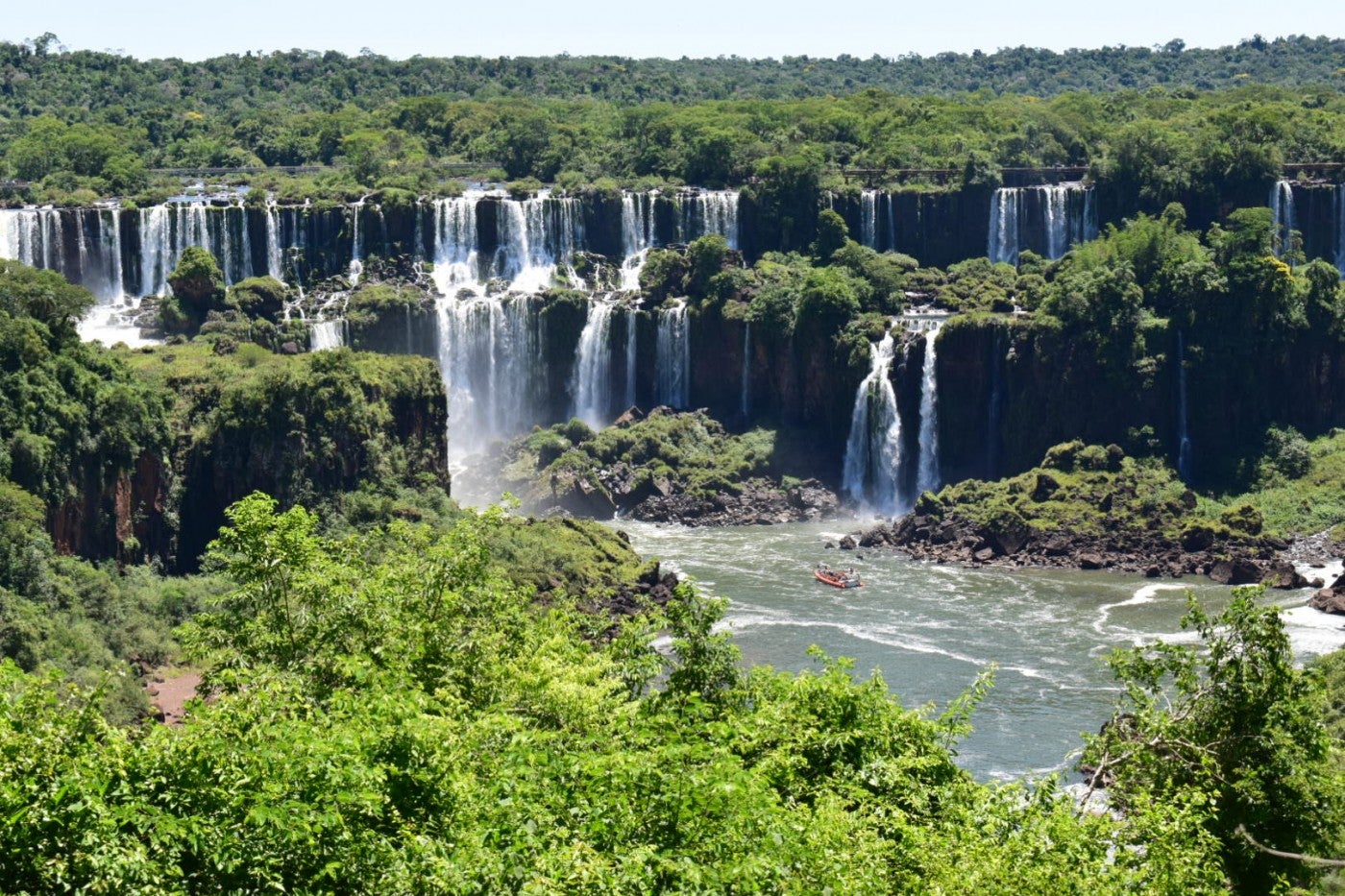
Unfortunately, this is the reality of many areas in the Atlantic Forest designed to protect biodiversity, especially on the Paraguayan side. In this challenging scenario, Smithsonian scientists and researchers from Itaipu Binacional, the second-largest hydroelectric power company in the world, co-owned by Brazil and Paraguay, have been working together since 2017 to promote Atlantic Forest conservation. In Paraguay, where only 3% of the Atlantic Forest is under some level of protection, Itaipu Binacional fully manages eight protected areas that play a key role in biodiversity conservation.
Many projects have been developed from the Smithsonian-Itaipu Binacional partnership – including one where the bare-throated bellbird crossed my path for a second time. This project aimed to identify ecological corridors, areas where forest conservation or restoration could improve the movement and survival of many species.
Initially, we planned to visit the forest to support the identification of corridors. However, it was early 2020 and we were all caught off guard by the COVID-19 pandemic. Therefore, we carried out the study remotely, based on information made available in biodiversity databases – information systems that store data on the location of species and/or biological aspects through the collaboration of many researchers, organizations or even citizens. The bare-throated bellbird was among the 15 species whose data would guide the identification of corridors. The species was selected because it is endangered in Paraguay, it was elected the national bird, and it has an important ecological role in dispersing seeds.
After a few months of compiling species records from camera traps, mist nets, point count and other sampling techniques, as well as data related to weather and land use, we decided to apply a methodology known as habitat suitability modeling. From this approach, we identified and quantified the main environmental elements present in the landscapes where the species are found, such as temperature, altitude, and the presence of forest. We then mapped these favorable conditions throughout the study area. It was the first time anyone applied this method to identify corridors in the Paraguayan Atlantic Forest. With these maps, we had a good hypothesis of how species are affected by the environment. Then, we could simulate how they might be moving through the study region.
If we could identify the paths animals would most likely take, we could indicate which routes should be protected. In this way, we could essentially indicate the “bridges” (ecological corridors) to be added between the “islands” (protected areas) in order to maintain healthy, long-term animal populations.
But what about the people who lived and farmed on that land? Or companies working there? We knew that we needed to address the human component as well. Our work would also be the first to include socioeconomic data in the process of identifying and prioritizing those “bridges” between Paraguayan protected areas.
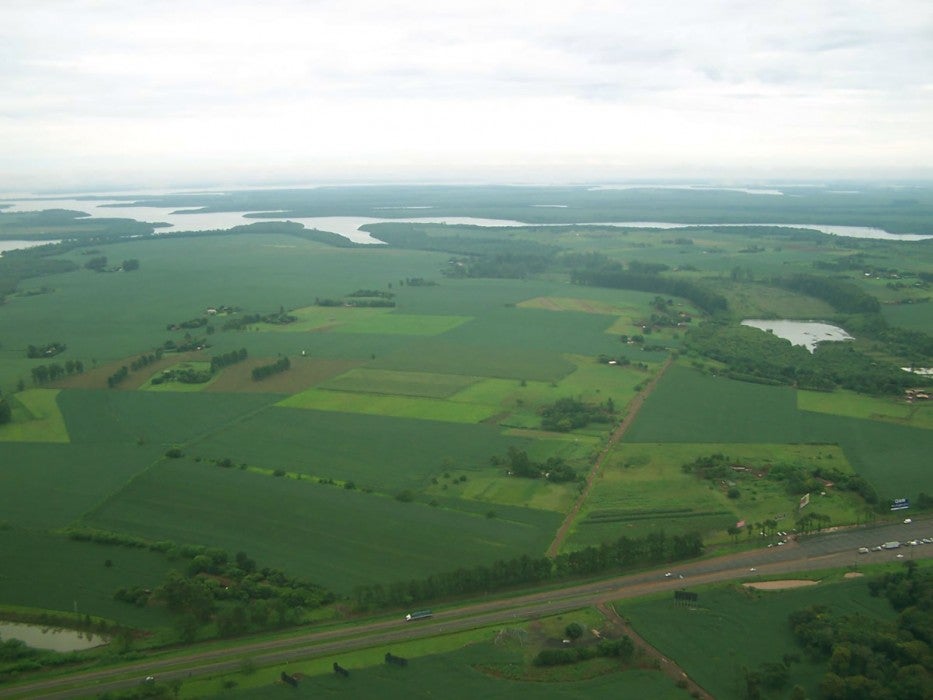
Our final product was a map that could help preserve important landscapes and animals. As we considered both species and socioeconomic data to find the corridors, it’s not a perfect solution. But it’s a great place to start, because it represents a balance between biodiversity and human needs.
Our next step is to validate the map we produced. Now that we can travel to the study area again, we’ll see if the identified priority areas line up with where the animals are actually moving. Then, we’ll identify farmers, indigenous groups, private companies, and government agencies in those areas and work with them to find a balance between socioeconomic growth and conserving important forest areas for species like the bare-throated bellbird.
There is a lot more work to do – years of work (probably decades). But I’m optimistic there’s a way for humans and animals to thrive in the Atlantic Forest. And because of that, I’m hopeful more people will get to experience the unique call of the bare-throated bellbird. Only by connecting biodiversity conservation with human needs is it possible to effectively protect and restore ecological corridors in the Atlantic Forest. With a well-connected network of protected areas, the powerful and resounding “hammering” of the bare-throated bellbird, as well as many other formidable singers, will be able to echo again through the Paraguayan forests – thus recomposing one of the most beautiful symphonies in the natural world.
